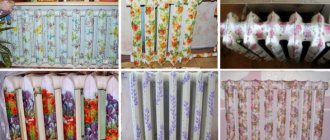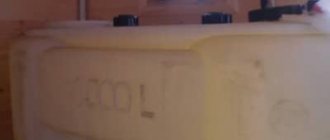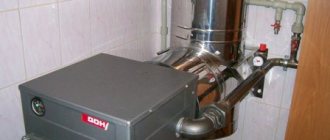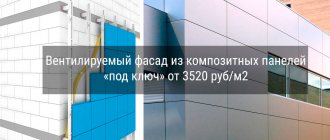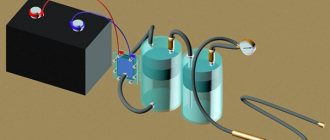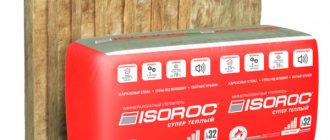One of the most expensive items for maintaining a house or apartment is rightfully considered heating costs in the autumn-winter period. Every year new heating technologies appear - from heat pumps, ultra-efficient electric boilers to double-layer film heated floors and everything in between. One of the latest interesting developments in the field of heating technologies was the appearance of Revolts plasterboard panels, which a large number of experts call one of the most effective and safest for the home.
New device, what is Revolts
In appearance, Revolts panels are very similar to a regular square-shaped plasterboard sheet with a hanger and a smooth front surface. From such sheets or single heating elements of Revolts plasterboard heating, you can assemble an entire wall, line the ceiling, or install single heaters in the coldest rooms of the building.
According to the manufacturers, the heating system is based on the long-known PLES technology - heating using thin graphite films on a polymer film.
Structurally, the Revolts plasterboard panel consists of the following elements:
- Heating composite fabric based on metal-graphite film tracks;
- Gypsum matrix, inside of which a heating film is laid;
- Thermal insulating substrate applied to the back side of the revolts panel;
- Electrical wiring and suspension system built into the heating sandwich.
Important!
Revolts heating panels do not require special conditions or fireproof elements, since in operating condition the temperature of the plasterboard surface rarely exceeds 90°C. A fairly simple and lightweight design that does not have moving parts, hydraulic and air circuits, open heating coils or other elements that consume oxygen in the air or reduce humidity in the room.
Official manufacturer of plasterboard heating panels Revolts
The Revolts plasterboard heating panel is used as basic or additional heating. These panels can be used to heat almost any type of premises in compliance with safety rules. Apartments, cottages, sports facilities, administrative and office premises, trade and exhibition complexes, service premises and much more.
Use the infrared plasterboard heating panel exclusively for its intended purpose as specified in the operating instructions.
The connection must be made only by professional craftsmen in accordance with the “Rules for the construction of electrical installations” and the “Safety rules for the operation of electrical installations”.
Installation of plasterboard heat supply panel.
The plasterboard heat supply panel consists of a specific plasterboard board, onto which a special heat-composite developed by the TEN company is pressed, thanks to which a significant part of the heat goes to heating the plasterboard board, there is also a reflector at the back of the panel for better operation of the panel, on the back of the panel there are connecting wires, On the front part of the panel there are markings (fields) into which self-drilling screws can be screwed for fastening to the guide profiles at the time of installation.
Connection instructions
- Several panels are connected in PARALLEL. (polarity does not matter)
- Wire cross-section for connection to panels 1.5 square
plasterboard heating REVOLTS
To prevent panel failure and overheating, use a thermostat.
- Plasterboard heat supply panel 10 pcs.
- Instruction manual 1 pc.
- Cardboard packaging 1 pc.
- The thermostat is not included in the set (purchased separately).
- Model: IGPO 600*600 REVOLTS
- Voltage: 220 V
- Radiation wavelength, microns 8-10
- Power, W 100
- Heating temperature of the front wall of the panel +55C
- Dimensions, mm - 600 * 600 * 12
- Weight, kg - 1.8
- Suspension height, m — 2–3
Operation and maintenance.
The plasterboard heating panel does not require maintenance.
Heat supply plasterboard panels should be stored in their original packaging, in a room with a temperature range of - 25C to +50C, with a moisture content of no more than 65%.
The manufacturer guarantees the absence of defects in the operation of the product for 10 years from the date of purchase.
If during this warranty period the product is found to be defective due to the fault of the manufacturer, it will repair the product free of charge or replace it if there is a sales stamp.
Attention! The manufacturer reserves the right to modernize the product without compromising its main parameters. All rights to the product are marked and reserved
All rights to the product are noted and reserved.
How to install a Revolts heater system
The most common installation option is ceiling; experts recommend installing plasterboard boards on the ceiling, as is done when installing conventional ceiling cladding.
The main requirement for installing Revolts heating panels is to insulate the concrete ceiling, otherwise half of the heat will go into the concrete. In this case, it is not necessary to sew on foam plastic boards; it is enough to nail a layer of OSB boards onto the dowels, after which you can install the profile and fasten the Revolts heaters with self-tapping screws, like regular drywall.
The second option involves installing heating panels on the walls of rooms; most often, the heaters are mounted at a height of 20-30 cm above the floor, like conventional convectors or radiators.
In this case, there is no loss of useful space due to the suspension of heat convector radiators, you can get rid of pipes, and there is no need to break through channels for laying separate wiring, as when using any electric heaters. In this case, there is no need to lay out the entire ceiling or walls with Revolts panels; for one square of usable area of the room, 0.7 square meters of heating surface will be required, or vice versa, 1 m2 of drywall can heat 1.3 m2 of the room.
The panels can also be laid into the base of the floor covering in the same way as a warm floor. In this case, the heat transfer coefficient is reduced due to an additional layer of laminate or parquet flooring, but in general, the quality of heating increases due to more rational heat distribution.
Algorithm of actions when creating a box to hide the battery
There are two ways in which you can disguise a heating battery behind a plasterboard structure: cover the radiator with a decorative wall made of plasterboard or build a regular plasterboard box around the radiator.
Which method should I use? It all depends on the layout of the apartment and the location of heating communications in the room.
The construction of a box is advisable if the radiator is located on the wall. You can do this with your own hands from plasterboard quite quickly. This method is more preferable, since only the battery is masked, and the usable area does not suffer.
Whether the box will be floating or standing on the floor depends on the interior of the apartment and the designer’s decision. Once a decision has been made on the design of the box, surface preparation and marking should begin.
What's special about the new heating scheme
The sale of a new heating system is accompanied by very powerful advertising. Manufacturers and dealers offering to replace traditional water and electric heaters with Revolts plasterboard heating panels cite the following arguments in favor of the new product:
- The installation of Revolts heating panels is quite simple; most of the work can be done with your own hands, without the help of highly specialized specialists;
- The Revolts system can be installed even in damp rooms, since the heating metal-carbon film is covered with a layer of polymer and gypsum;
- Economy heating revolts are twice as effective as conventional heaters, convectors, radiators, the average electricity consumption of one panel is 100-300 W/h;
- Thanks to the design features, it is possible to individually regulate the heating and heat transfer of any sections of the walls in the room, thereby creating the opportunity to save on night mode and in the absence of owners in the house;
- Revolts panels have an almost unlimited service life.
It is clear that no technical system has an unlimited resource, but the manufacturer’s specialists believe that a plasterboard sandwich can withstand a very large number of heating and cooling cycles.
In addition, most selling companies believe that Revolts plasterboard heating panels can be used as a finishing material, like regular drywall. After installation, the surface of the Revolts panels can be painted, applied with decorative plaster or tiled, like a regular wall. Since heating using the new system is used for a fairly limited period, it is quite difficult to reliably confirm or refute the service life of the heaters, but preliminary conclusions about the advantages and disadvantages can be drawn from reviews of Revolts plasterboard heating panels over the last couple of years of operation.
Installation
The dimensions of the REVOLTS heating panel correspond to dimensions 600*600. The panels have special markings for fastening, ensuring ease and convenience of installation.
Attaching a heating panel to profiles is no different from attaching a regular sheet of drywall.
Comfort technology
Unlike convector-type heaters (including central heating radiators), REVOLTS heating panels transfer heat through infrared heat waves. Such warmth is similar to the warmth of a fire, fireplace, Russian stove and the sun - the main heater of our planet.
This property of the infrared panel system allows:
- Rationally distribute the temperature across the height of the room. Warm up the floor space without overheating the air at head level.
- Maintain the necessary air humidity and freshness in the room.
- Heat the walls, floor, interior items and the person himself, minimizing convective air currents (drafts) that raise dust and create discomfort.
- Distribute heat evenly throughout the room with the temperature of the heating surfaces (45-50C) close to human body temperature.
These features of the system allow you to create your own microclimate in the room, the most favorable conditions for human living and activity.
Energy saving. Energy Saving Technologies
- REVOLTS infrared panels are connected to an automatic thermostat that controls the air temperature, which allows you to turn on the system only as needed and maintain optimal temperature conditions in each individual room.
- The system avoids excessive heating of the air, while the temperature between the floor and ceiling is equalized.
- Heat accumulates in objects and walls; heated objects, in turn, release the accumulated heat into the room.
- Thanks to the uniform placement of infrared heating panels, the room warms up much faster.
Infrared panels are energy-saving technologies.
Energy savings from 30 to 50%. Wide range of design and design possibilities
The use of infrared heating panels "REVOLTS" as the main and additional heating allows you to get rid of pipes, radiators and other utility networks used in traditional heating.
The panels can be placed both on the walls and on the ceiling or only on the ceiling, i.e. where it is convenient and necessary. In this case, the efficiency of the heating system will not be affected in any case.
The presence of the system will only be indicated by a thermostat located in a convenient location on the wall. The low heating temperature of drywall (40-50C) allows for any fine finishing of the surface (wallpaper, tiles and various decorative materials).
Safety and durability
Infrared heating panels "REVOLTS" are made of environmentally friendly materials and are absolutely fireproof. The components for the heating panel have been selected and tested for many years.
Despite the simplicity of the panel, it is a complex complex of correctly selected materials and components due to which this panel has high performance characteristics. The operation of the panels is permitted as the main heating system without supervision.
The durability of heating panels is due to the simplicity of the design, the almost unlimited service life of the materials used in production (moisture-resistant drywall), as well as the low temperature of the special heating element.
remontyes.ru
zen.yandex.ru
Performance quality of Revolts heating panels
New heating technology is just gaining momentum, and criticism is already accumulating like a snowball. Undoubtedly, the idea behind using plasterboard sheet as a heating surface has its advantages:
- The heater works like the wall of a wood-burning stove, part of the heat is lost due to convection, part due to radiation, drywall does not burn, is not capable of burning or causing a short circuit;
- A plasterboard panel with a layer of heating film retains most of the characteristics of the sheet - flat surface, light weight and ease of installation;
- Lack of metal in the heater design.
In reality, if you disassemble the Revolts panel, you can see that inside between two layers of gypsum there is a transparent polymer film, which is why the surface temperature never exceeds 80-90°C. Manufacturers of the Revolts plasterboard heater attribute this fact to the heating advantages, since the material does not shield the walls and does not create a background, as is the case with electric spiral heaters.
Is it worth contacting Revolts heaters, user opinion
According to reviews, Revolts plasterboard heating has no less disadvantages than advantages, so it is important to remember them too.
The most significant problems:
- Product price;
- Difficulty of repair;
- Heat is too low.
The first and most important complaint about the operation of plasterboard heaters is the high price; a square meter of Revolts will cost 1300-1400 rubles, respectively, to heat one room of 20 m2, at least 14 square meters of Revolts will be required, which will amount to almost 19 thousand rubles. This is approximately twice as expensive as if you equip a room with a pair of conventional 1 kW convectors.
At the same time, plasterboard boards require careful handling and careful installation; if you drop the heater from the height of the ceiling, then with a high degree of probability it will have to be scrapped, since it is almost impossible to repair the monolith.
In addition, according to reviews, Revolts heating requires very competent planning. This second problem is perhaps the most difficult one consumers have to face. Revolts heating systems are classified as low-temperature systems. This means that 50-55% of the heat leaves the surface of the plaster using convection, and the device itself is more similar to a conventional water heating battery or an oil convector.
Therefore, despite the presence of a heat-insulating lining, it is still better to install the Revolts panel at a short distance from the walls, rather than install it as a cladding. All the stories about the ideal thermal insulation of the rear surface are nothing more than advertising; consumers themselves have already realized this, and often the Revolts heating plasterboard is installed by hand in the same way as a conventional electric convector.
The second half of the energy is transmitted in the form of radiation, but it is very soft and weak, so the slabs can be used to sheathe the space around a child’s bed or sofa, rather than heat the entire space. The maximum heating range of the Revolts panel is 0.6-0.8 m, which is clearly not enough.
Types of Infrared Heaters and Types of Radiant Heating
Depending on what type of heaters are used to produce heat, electric infrared heating systems are usually classified into panel and film. Heating panels made of plasterboard should be placed in a separate category - an effective new product that deserves attention. Based on the method of placing radiators, heating systems are divided into ceiling, wall and floor. In some cases, combined options are chosen.
Electrical panels and their varieties
Wall-mounted heating panels are mounted on walls or ceilings at any stage of renovation. The panels are compact devices in durable metal cases painted with powder dyes. Heating is carried out by a tubular electric heater or a heating coil. In modern devices, heating elements made of ceramic, tungsten or quartz are more often used. The role of a long-wave emitter is played by an aluminum plate.
Emitters built into the ceiling structure are produced especially for suspended ceilings. They blend into the ceiling finish and are almost invisible in the interior. Heating units are installed taking into account the operational characteristics of the home. For example, by securing a heat source above the seating area and leaving the area above the closet unheated, you can significantly reduce costs.
PLEN – ultra-fine heat
Film radiant electric heaters are the thinnest heating devices. The source of infrared radiation in them is carbon thermoelements. Heating film can be used for floor, wall and ceiling infrared heating.
In a heated floor system, the film can be installed under any decorative covering without fear of overheating. Depending on the finishing material, various options for installing PLEN are used.
When installing infrared film heating, PLENs are mounted directly on drywall, on mounting rails above it, or on a rough ceiling if the distance between it and the finish is less than 5 cm. The latter mounting option is also chosen for suspended ceilings.
Heating drywall - invisible heating
Built-in infrared heating panels are ideal for rooms with walls or ceilings finished with plasterboard using the frame method. The design of these devices consists of a sheet of plasterboard, on the back of which there is a heater in the form of an electrically conductive carbon thread. During the production process, the plasterboard sheet is protected with electrical insulation, and the heater is covered with a durable polymer coating on top.
Heating panels have already been appreciated by designers - they are absolutely invisible in the interior. Some experts recommend installing this type of panel as a backup option in homes with central heating. Installing the system is no different from covering walls and ceilings with plasterboard.
To choose the right infrared heating system for your home or apartment, it is recommended to contact a specialist who will assess the parameters of the home, take into account its area, the state of thermal insulation and other important points. You can do the installation of electrical appliances yourself only if you have the appropriate experience; in other cases, it is better to entrust the work to a professional technician.
teploguru.ru
What is the real situation with Revolts panels
One of the remaining uncertain issues is the reliability and service life of Revolts. Manufacturers of plasterboard panels claim that the heating element is made of a very resistant and durable composite material. The film is not afraid of acids and alkalis, does not oxidize and does not burn out. Practical tests show the ability of the heating core of a plasterboard panel to work continuously for 10-11 years; in theory, Revolts should work almost forever.
In practice, heated plasterboard panels are subject to more difficult conditions. Firstly, the heating-cooling cycle invariably leads to the development of a large number of microcracks, both in the plaster itself and in the film material. Even metal has the ability to get tired, especially since the Revolts film heater will quickly become covered with cracks if you do not follow the installation recommendations.
Secondly, despite the manufacturer’s assurances, Revolts plasterboard panels should not be covered with any decorative materials - paint, plaster, and even more so, tiled. This always leads to “conservation” of heat and destruction of gypsum, as a building material, under the influence of water vapor. A heated plasterboard panel covered with tiles will transfer heat into the concrete and plaster.
In addition, the panels cannot be cut at your own discretion, as could be done with plasterboard sheets, so the number of heaters must be carefully balanced with the size and geometry of the room.
plasterboard heating panels REVOLTS – Construction Forum
- Page 1 of 3
- 1
- 2
- 3
- »
yes
The fact that you calculated 10 panels per 10 m2 was calculated incorrectly; I say this as a heating technician with 15 years of experience. The actual quantity that is installed is 1 panel per 1.3 m2.
This information is available on the manufacturer's official website.
A very important point - please do not confuse the calculation coefficients for convective and infrared heating; they are very different and the calculation conditions are different!! Therefore, it is not difficult to calculate that what will be required is not 10 panels as was calculated above, but only 7 pieces. This is about quantity. And taking into account the fact that from 5 pieces there are already discounts and the above retail price is 1370, the total cost of the set is almost two times lower than what you calculated above. As for the durability of Bilux-Ecoline heaters, the reality is that their average service life is only 3-4 of the year.
With very rare exceptions, 5-6 years. With a 5-year warranty. In total, in 10 years you will have to buy 2-3 Ecoline-Bilux heaters. These are the realities. This means that the material costs for their purchase increase to 10-12 thousand rubles, which is almost twice as high as for a set of Revolts plasterboard heating panels. For reference: my parents had two Ecoline heaters at their dacha, one lasted 2.5 years, the other a little longer. Secondly, the Ecoline (Bilux) infrared heaters mentioned here are nothing
Their characteristics and quality do not have anything in common with Revolts plasterboard heating. Please read how this device works and its characteristics on official resources, and then begin to judge it objectively.
We must start with the fact that ordinary infrared panels, which are mentioned in the comments here, have a heating temperature of the element of 270-350 degrees, while for Revolts plasterboard panels it is only 57-60 degrees C!!
(i.e. you won’t get burned by them).
And due to the fact that infrared heaters of the Bilux (Ecoline) type are HIGH TEMPERATURE heaters - and their heating element is filled with a mixture of
carbon fiber with another component - which is passed off as carbon fiber, the service life of this device is very low. If the heating elements of metal infrared heaters that are produced actually had a carbon component, then heaters of this type would cost about 7-8 thousand apiece. Take for example an original Italian infrared heater of the same type, the same power, they cost 20 thousand rubles each :)) Yes, alas and ah. This is the honest truth.
Again, I’ll mention that being even 2-3 meters away from such high-temperature infrared heaters as Bilux-Ecoline and the like is, to put it mildly, uncomfortable :)) This problem is especially felt with a ceiling height of 2.5 - 3 meters. Any owner of such metal heaters will definitely confirm this to you. Yes, you know that yourself. Again, what is the heating element of Ecoline-Bilux heaters made of? Made of metal, right?? A metal holder filled with a mixture (powder) And this is such an electromagnetic background that it won’t seem like much. This is easy to check with a device.
Let's now look at the Revolts plasterboard heating panel. There is absolutely NO metal as such in the design of the Revolts plasterboard heating panel. And the Revolts panels have ABSOLUTELY no noise.
That is why these Revolts panels are the only infrared heating systems that were allowed to be installed several years ago in one of the regional hospitals in the central region in the neurosurgical department in the operating room. Where devices that are simply enormously expensive and sensitive to electromagnetic background are installed.
Due to the fact that Revolts panels use the purest carbon low-temperature component (with a 40-fold temperature reserve), the panels are truly very durable. That is why they are given a warranty period of 10 years. And the instruction manual states that they have an UNLIMITED service life. By the way, the first Revolts test panels were installed for testing at sites more than 11 years ago. And not a single one of these panels has failed so far!! Separately, it should be said about the composite coating of the element, which not only has an 8-fold temperature reserve, but is also acid-resistant! This unique development is the property of the company, patented and has all the necessary certificates. The good news is that people have begun to be more careful when choosing a product and not rush to the first one they come across. I wish you all successful purchases!
Advice for future buyers of plasterboard panels
Practice shows that the most suitable place for installing Revolts plasterboard heaters is the ceiling and the middle line of the walls. In rooms where most of the time is spent in a sitting position, Revolts heating panels are installed on the walls of the room so that the distance from the sofa, armchairs or bed does not exceed 80 cm.
In the kitchen, in the hallway, even in the bathroom, plasterboard heaters are placed on the ceiling. If the room is large or has very high ceilings, then plasterboard panels will be of little use; at best, you can create a comfort zone in a small area near the computer, at the table or near the TV. In such a situation, Revolts panels are significantly inferior to heated floors, both in efficiency and heating efficiency.
The maximum efficiency of Revolts plasterboard heaters is achieved in rooms with a maximum width of 2.5 m. For narrower rooms, most of the heat will simply go under the ceiling and be lost; for wider spaces, the efficiency of Revolts plasterboard panels will clearly not be enough; a zone with a lower air temperature will necessarily form in the center.
Installation of thermal plasterboard heaters
The most rational method of installing infrared plasterboard heating is the method of attaching tiles to the ceiling. By installing several structures near the window, you can increase the room temperature to +20 degrees. But during the installation process it is recommended to carry out work on insulating the ceiling. Any materials can be used here, including OSB.
Wall installation of heating elements is carried out at a level of up to 50 cm. from the floor using ordinary self-tapping screws. In this case, the need for pipes, wiring of heat convectors and radiators disappears. On average, 1.5 m² of room area will require 1 m² of heating panels, i.e. to heat a room measuring 15 m² you will need 10 m² of plasterboard heaters.
The technology can also be used in a “warm floor” system, but then the heat transfer is somewhat lost due to the floor covering, but due to the rational distribution of radiation, the overall heating rate does not change.
We recommend: Features of industrial infrared heating
